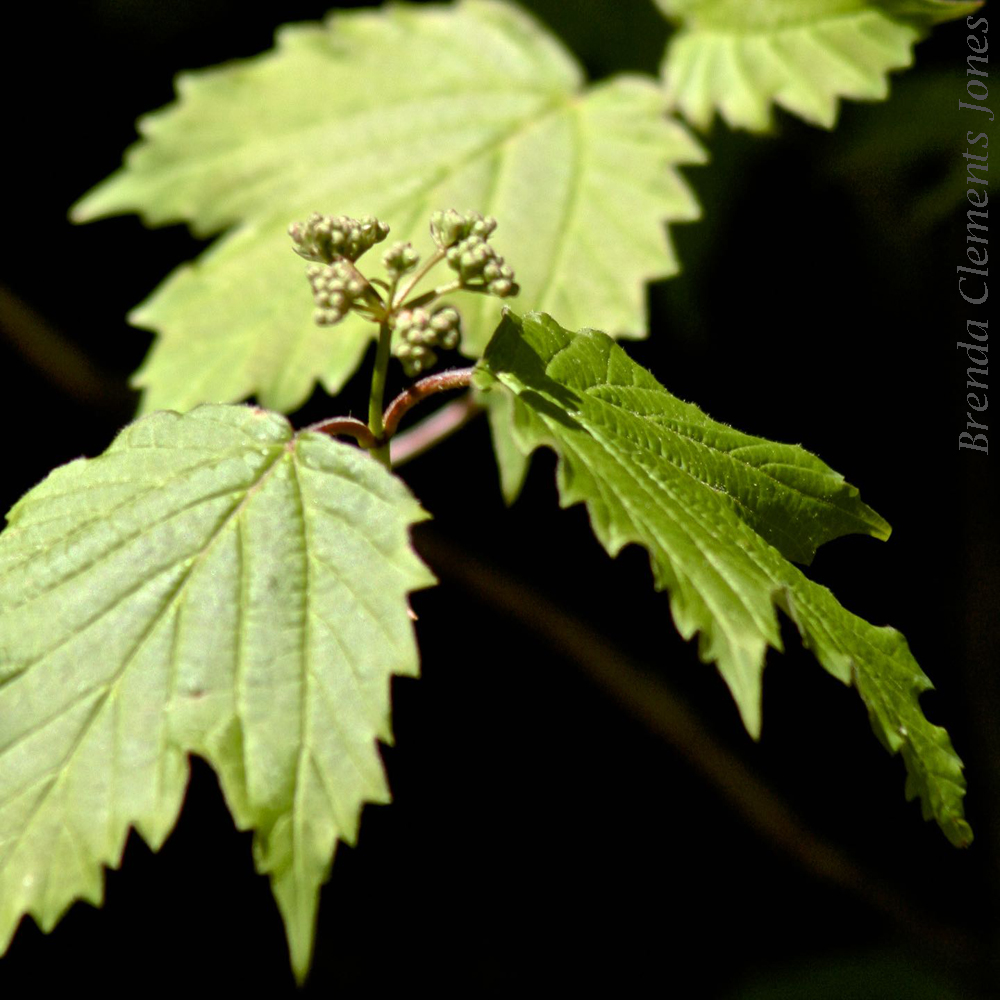Just now beginning to leaf out, greeting spring. Maple-leaf Viburnum (Viburnum acerifolium), native to eastern North America, an understory, deciduous shrub.
It’s plentiful up here on my mountain, and is easy to identify with its twin, maple-like leaves. I’ve been fortunate to have received several of these shrubs as gifts. Shrubs that I’m watching grow as each year passes. Shrubs that add to my pleasure living in the woods.
The Maple-leaf Viburnum will mature to a height of six feet and a width of 4 feet. In early May pale pink buds emerge making way for soft white flat-topped flower clusters, know as cymes.
Maple-leaf Viburnum has a nectar that with its fragrance attracts bees, flower flies, moths and butterflies to help pollinate the flowers. It’s also a larval host of the Spring Azure.
The cyme, is one to three inches wide consisting of quarter inch wide individual flowers, a soft white often with a slight hint of pink.
These flowers must be cross-pollinated with another Maple-leaf Viburnum plant that is not an exact clone in order for berry-like drupes to appear in the autumn.
The fruits are attractive to many birds, including Ruffed Grouse, Cedar Waxwings, Cardinals, Hermit Thrushes, Eastern Bluebirds, Robin and Wild Turkeys.
If proper pollination takes place, the flowers give way to blue-black drupes in late autumn that may persist into the winter. The autumn leaf color ranges from shades of pink to red, leaning toward purple, and warm yellow. Gorgeous!








2 responses to “Maple-leaf Viburnum”
Enjoyed the tour! Happy Spring to you.
Hugs to you from across the country!